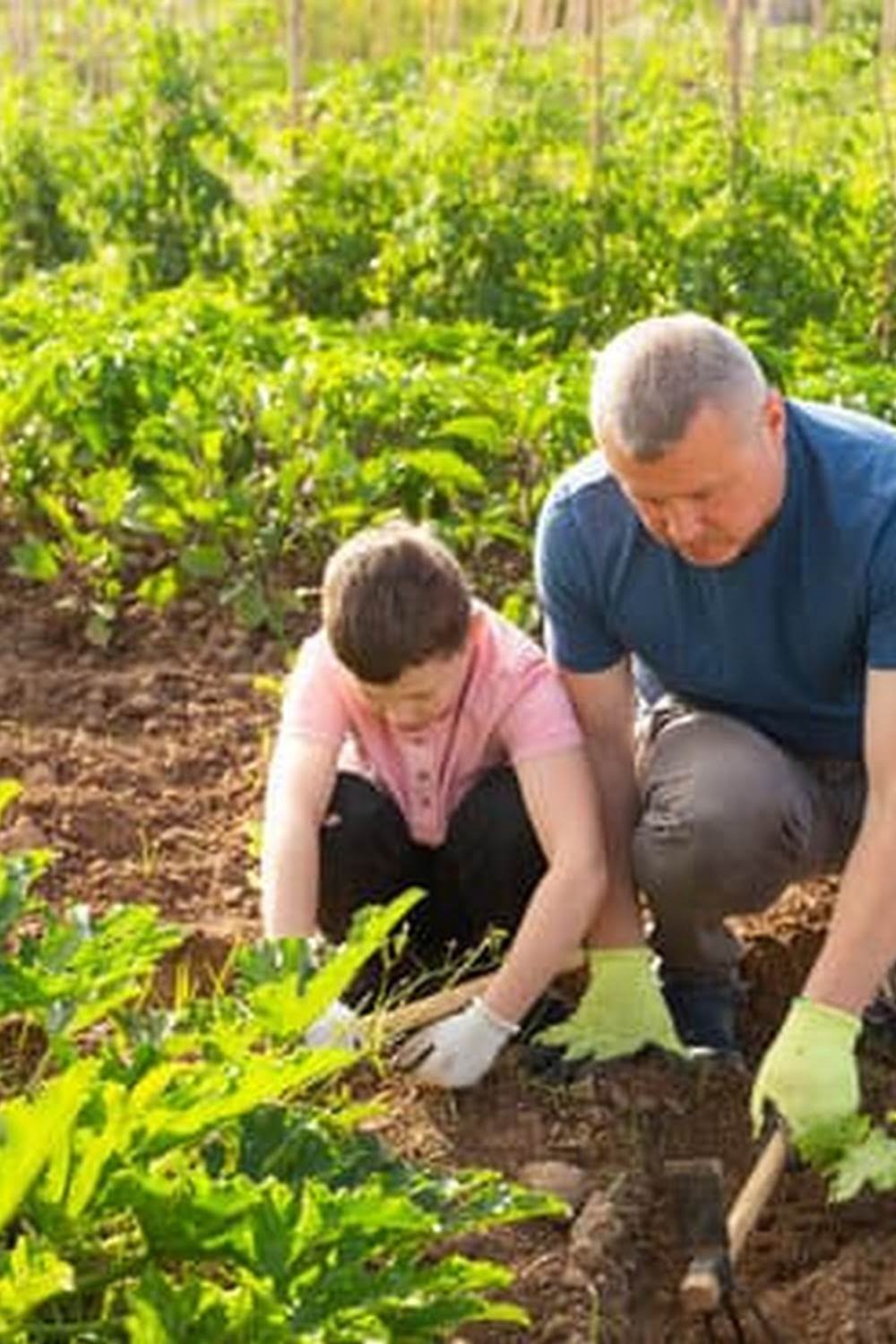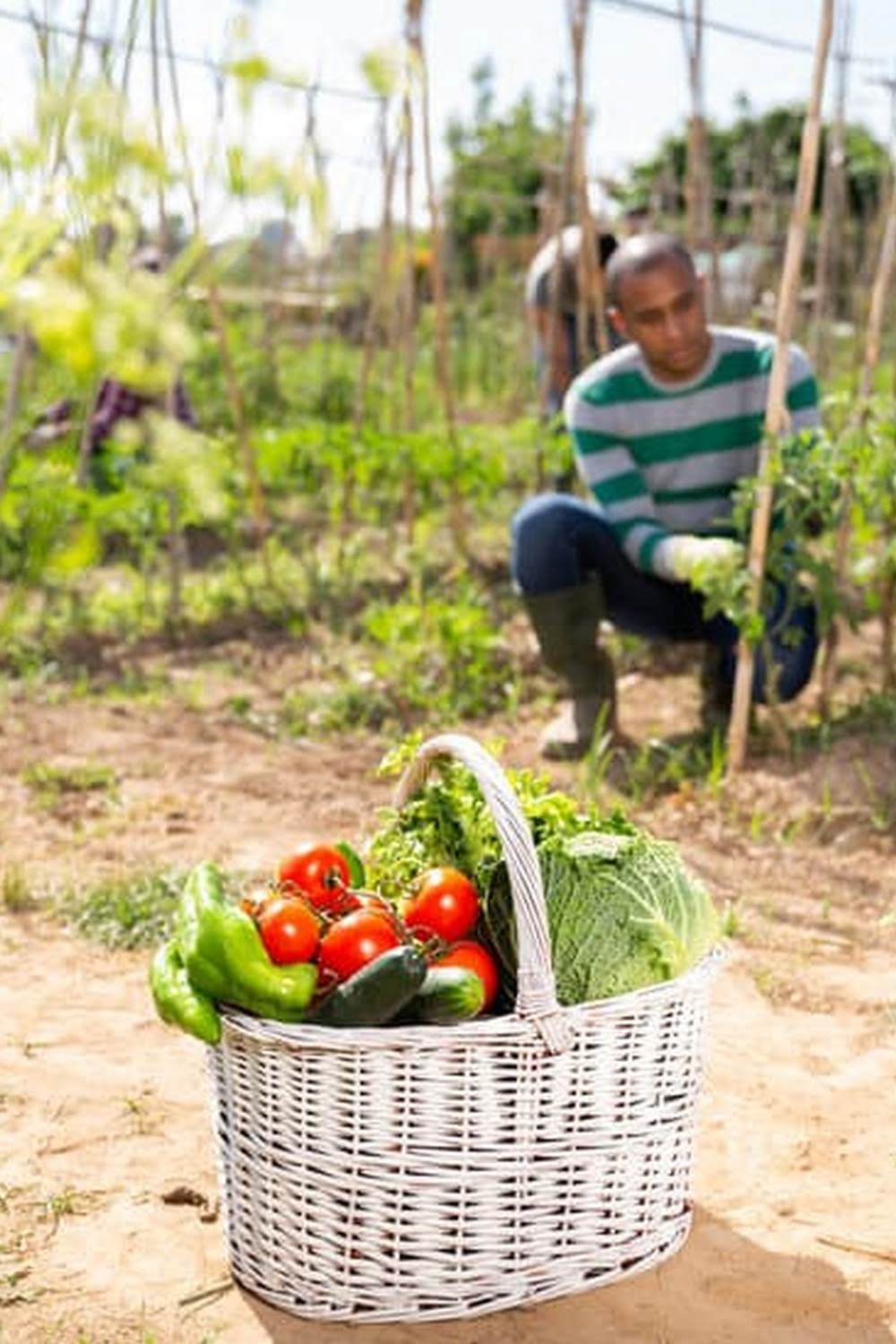Are you wondering what bricks are safe for vegetable gardens? When it comes to creating garden beds and pathways, the materials used can have a significant impact on the health and safety of your plants, soil, and ultimately, your food. In this article, we will explore the importance of using safe bricks in vegetable gardens and offer insights into the different types of bricks that are suitable for such environments.
Using unsafe or contaminated bricks in vegetable gardens can pose potential dangers to both plant life and human health. Toxic materials or hazardous substances present in certain types of bricks can leach into the soil, leading to contamination of vegetables and other crops. Understanding the risks associated with unsafe bricks is crucial in making informed decisions about which materials to use in your garden.
In the following sections, we will delve into the various types of safe bricks that are suitable for vegetable gardens, including clay bricks, natural stone bricks, and untreated concrete bricks. Additionally, we will highlight the importance of selecting lead-free bricks and provide best practices for incorporating them into garden beds and pathways while avoiding chemical contaminants. By gaining a deeper understanding of these topics, you can make well-informed choices for a thriving and sustainable vegetable garden.
The Dangers of Using Unsafe Bricks
When building a vegetable garden, it is essential to consider the materials used, including the type of bricks. While bricks are a popular choice for creating raised beds and pathways in gardens, using unsafe bricks can pose potential hazards to both plants and humans. This section will explore the dangers of using toxic or contaminated bricks in vegetable gardens.
Health Risks
One of the primary concerns with using unsafe bricks in vegetable gardens is the health risks they may pose. Bricks that contain toxic substances such as lead or other heavy metals can leach into the soil over time, contaminating the vegetables grown in the garden. When consumed, these vegetables can have detrimental effects on human health, particularly for young children or pregnant women. Additionally, contaminants from unsafe bricks can also seep into groundwater, posing environmental risks as well.
Soil Contamination
Another danger of using unsafe bricks in vegetable gardens is soil contamination. Toxic materials from certain types of bricks can leach into the soil, causing long-term damage to its fertility and overall health. This can impact the growth and quality of vegetables and other plants, ultimately affecting the success of the garden as a whole. In some cases, contaminated soil may need extensive remediation efforts to make it safe for gardening again.
Environmental Impact
In addition to health risks and soil contamination, using unsafe bricks also has an environmental impact. Contaminated soil affects local ecosystems and wildlife and can have far-reaching consequences beyond the immediate garden area. Furthermore, production and disposal of toxic building materials contribute to environmental pollution and resource depletion. Therefore, using safe bricks in vegetable gardens is not only essential for human health but also for protecting the environment from harmful contaminants.
Types of Safe Bricks
When it comes to choosing the right materials for your vegetable garden, the type of bricks used can have a significant impact on the safety and health of your plants. It’s important to opt for bricks that are free from toxins and contaminants, ensuring that they won’t leach harmful substances into the soil and affect your produce. Fortunately, there are several types of safe bricks that are ideal for use in vegetable gardens.
Clay Bricks
Clay bricks are a popular choice for vegetable garden beds and pathways due to their natural composition and minimal environmental impact. These bricks are made from clay that is fired at high temperatures, resulting in a durable and non-toxic building material. Clay bricks are known for their excellent drainage properties, making them well-suited for garden applications.
Natural Stone Bricks
Natural stone bricks, such as sandstone or limestone, are another safe option for vegetable gardens. These bricks are sourced directly from quarries without additional chemical processing, making them environmentally friendly and suitable for organic gardening practices. Natural stone bricks add a rustic charm to garden landscapes while providing a long-lasting and low-maintenance solution for creating garden borders or walkways.
Untreated Concrete Bricks
While concrete can contain harmful additives such as fly ash or heavy metals like lead, untreated concrete bricks manufactured with pure cement, aggregate, and water offer a safe alternative for vegetable gardens. These bricks provide stability and versatility in garden construction without posing any risk of contaminating the soil. Just be sure to verify that the concrete bricks you choose do not contain any added chemicals or toxic compounds.
By opting for these types of safe bricks in your vegetable garden projects, you can create a healthy and sustainable environment for growing fruits, vegetables, and herbs while minimizing potential risks to your plants and the surrounding ecosystem.
Lead-Free Bricks
Lead contamination in building materials is a serious concern, particularly when it comes to using bricks in vegetable gardens. Lead is a toxic substance that can leach into the soil and be absorbed by plants, posing a risk to both human health and the environment. Therefore, it is crucial to prioritize the use of lead-free bricks when constructing garden beds, walkways, or any other hardscape features in vegetable gardens.
When selecting bricks for your vegetable garden, it’s important to be aware of the potential sources of lead contamination. Some older bricks may contain lead-based paint or glazes, while others may have been exposed to environmental pollutants over time. To ensure the safety of your garden, consider the following types of lead-free bricks:
- Clay Bricks: These are made from natural clay and shale, without any added chemicals or contaminants. They are a safe and environmentally friendly option for vegetable gardens.
- Natural Stone Bricks: Stone such as granite, limestone, or sandstone are typically free from lead and other harmful substances. They provide a durable and aesthetically pleasing choice for garden construction.
- Untreated Concrete Bricks: Concrete itself does not contain lead, but some concrete products may have additives or coatings that could pose a risk. Look for untreated concrete bricks or blocks to avoid potential contamination.
In addition to choosing the right type of brick, it’s also important to verify that the manufacturer certifies their products as lead-free. This can provide an extra layer of assurance that the materials you’re using are safe for your vegetable garden. By taking these precautions and opting for lead-free bricks, you can create a healthy and sustainable environment for growing vegetables while minimizing potential risks associated with toxic contaminants.
Best Practices for Using Bricks in Vegetable Gardens
When using bricks in vegetable gardens, it is essential to follow best practices to ensure the safety of both the plants and the individuals tending to the garden. One important tip is to use bricks that are free from contaminants such as lead, which can be harmful if leached into the soil. Choosing lead-free bricks is crucial for maintaining a healthy and safe gardening environment.
In addition, it is important to properly prepare the area where the bricks will be used. This involves removing any existing vegetation, leveling the ground, and laying a weed barrier to prevent unwanted plants from growing between the bricks. By taking these steps, gardeners can create a stable foundation for their brick pathways or raised beds.
Another key guideline when using bricks in vegetable gardens is to avoid chemically treated or coated bricks. Some bricks may have additives or coatings that can release toxins into the soil over time, posing a risk to edible plants. To ensure safety, it is best to select untreated bricks that are specifically designed for use in outdoor settings like gardens.
By following these tips and guidelines, gardeners can safely incorporate bricks into their vegetable gardens, creating functional pathways and sturdy raised beds without compromising the health of their plants or themselves.
| Tip #1 | Select Lead-Free Bricks |
|---|---|
| Tip #2 | Properly Prepare Garden Area |
| Tip #3 | Avoid Chemically Treated Bricks |
Avoiding Chemical Contaminants
When using bricks in vegetable gardens, it is crucial to consider the potential presence of chemical treatments and coatings on the bricks. These treatments and coatings can introduce harmful substances into the garden environment, affecting the soil and potentially contaminating the produce. Therefore, it is essential to address the issue of chemical contaminants on bricks and take steps to avoid them for safe use in vegetable gardens.
One common type of chemical treatment used on bricks is a water-repellent coating, which is applied to reduce water absorption and protect the surface of the brick. While this may be beneficial for certain construction applications, it can pose risks in a vegetable garden setting. The chemicals present in these coatings can leach into the soil over time, impacting both plant growth and food safety.
To avoid potential chemical contaminants from treated or coated bricks, it is advisable to select bricks that are specifically labeled as untreated or free from added chemicals. Natural stone bricks and clay bricks are often safe choices, as they typically do not undergo chemical treatments during production. Additionally, seeking out eco-friendly or sustainable brick options can further minimize the risk of chemical contamination in vegetable gardens.
In addition to choosing untreated brick materials, another strategy for avoiding chemical contaminants is to source reclaimed or salvaged bricks for garden projects. These bricks have already been exposed to outdoor conditions for an extended period, allowing any residual chemicals from previous treatments to degrade or dissipate. When using salvaged bricks, it is still important to inspect them for any signs of coatings or treatments before incorporating them into the garden environment.
Environmental Impact of Safe Bricks
When it comes to building materials for vegetable gardens, considering the environmental impact of the choices made is crucial. Using safe bricks not only ensures the health and safety of the plants and people in the garden but also contributes to sustainability and eco-friendliness. Here are some key points to consider regarding the environmental impact of using safe bricks in vegetable gardens:
- Material Sourcing: Safe bricks, such as clay bricks and natural stone bricks, are often sourced from natural, sustainable materials, minimizing the environmental impact of extraction and processing.
- Longevity: Safe bricks are known for their durability, which means they can be used in vegetable gardens for extended periods without needing replacement. This reduces wastage and the need for frequent production and transportation of new materials.
- Recyclability: When safe bricks reach the end of their usable life in a garden setting, they can often be repurposed or recycled into other construction projects, reducing overall waste generation.
Another important aspect of using safe bricks with a positive environmental impact is considering where they are placed within the garden. Utilizing them strategically in pathways can minimize soil erosion, provide drainage channels that reduce water runoff, and create heat-absorbing surfaces that contribute to a more stable microclimate for plant growth.
Conclusion
In conclusion, it is evident that the choice of bricks in vegetable gardens can have a significant impact on the safety and overall health of the plants, as well as the individuals consuming them. The potential dangers of using toxic or contaminated bricks, particularly those containing lead or chemical treatments, cannot be overstated.
Therefore, it is crucial to prioritize the use of safe bricks in garden beds and pathways to ensure the well-being of both the environment and the individuals involved.
When considering which types of bricks are safe for vegetable gardens, options such as clay bricks, natural stone bricks, and untreated concrete bricks stand out as preferable choices. These materials not only provide a sturdy foundation for garden structures but also minimize the risk of chemical contamination or leaching into the soil. Additionally, opting for lead-free bricks and avoiding chemical contaminants further contributes to creating a safe and sustainable environment for growing vegetables.
In light of these considerations, it is essential to adopt best practices when using bricks in vegetable gardens. This includes properly sourcing and inspecting the quality of bricks, as well as carefully incorporating them into garden designs without compromising safety.
By prioritizing environmental impact and sustainability when selecting materials for vegetable gardens, individuals can contribute to creating a healthier and safer growing environment for their crops. Ultimately, choosing safe bricks for vegetable gardens is not only beneficial for plant growth but also plays a crucial role in promoting overall well-being and ensuring the production of safe and healthy produce.
Frequently Asked Questions
What Is the Safest Material for a Vegetable Garden?
The safest material for a vegetable garden is untreated natural wood, such as cedar or redwood. These types of wood are resistant to rot and decay, making them a durable and safe choice for building raised beds for growing vegetables.
Are Cinder Blocks Safe to Use for Vegetable Gardens?
Cinder blocks can be safe to use for vegetable gardens, but precautions should be taken. Always ensure that the cinder blocks are not treated with toxic chemicals or substances that could leach into the soil. Additionally, consider lining the interior of the cinder blocks with landscape fabric to prevent direct contact between the blocks and the soil.
What Is the Best Material to Make a Raised Vegetable Garden?
The best material to make a raised vegetable garden is generally considered to be untreated natural wood, such as cedar or redwood. These types of wood are not only safe for growing vegetables but also provide good insulation for the soil and have excellent durability.
Other materials like composite lumber or stone can also be used but may require additional considerations depending on their composition and potential leaching of chemicals into the soil.

If you’re looking to get into vegetable gardening, or are just looking for some tips on how to make your current garden better, then you’ve come to the right place! My name is Ethel and I have been gardening for years. In this blog, I’m going to share with you some of my best tips on how to create a successful vegetable garden.





